RS Aggarwal Class 11 Solutions Chapter 10
RS Aggarwal Solutions for Class 11 Chapter 10 – Binomial Theorem PDF
RS Aggarwal Class 11 Solutions Chapter-wise – Free PDF Download
The best way to clear up any questions you have about Binomial theorem is to look at RS Aggarwal Class 11 solutions chapter 10. This chapter teaches you about the Binomial Theorem and related ideas, like the total number of terms in a Binomial Theorem, how to solve expansions, how to use Binomial Theorems to find bigger numbers, how to use Binomial Theorems to solve proofs, what the general term of a Binomial Theorem is, and how to find the coefficient of a term and the middle term of a binomial theorem
RS Aggarwal Class 11 solutions chapter 10 has two exercises: 10A and 10B. Together, they have about 64 questions. Based on the most recent CBSE exam pattern, these questions have been made. Not only do these questions help you prepare for the CBSE test, but they also help you prepare for the NEET and JEE. All of the RS Aggarwal Solutions are made to be step-by-step so that you don’t get lost in the chapter’s complicated calculations. Student can access utopper’s study materials Revision notes, Important Question and many more.
Click here to Buy Online The RS Aggarwal Class 10 Book Now
RS Aggarwal Class 11 Solutions Chapter 10 – Binomial Theorem


















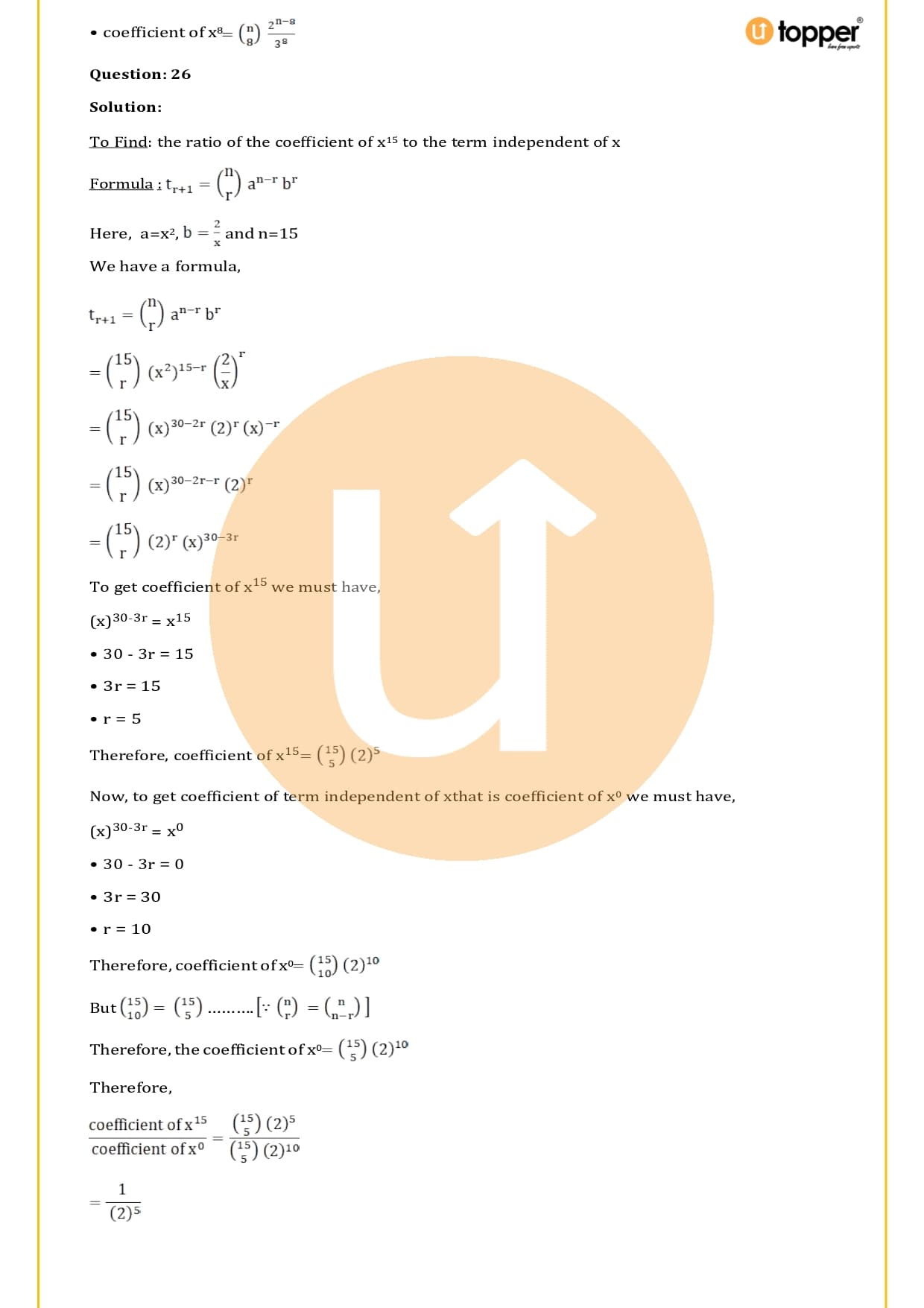



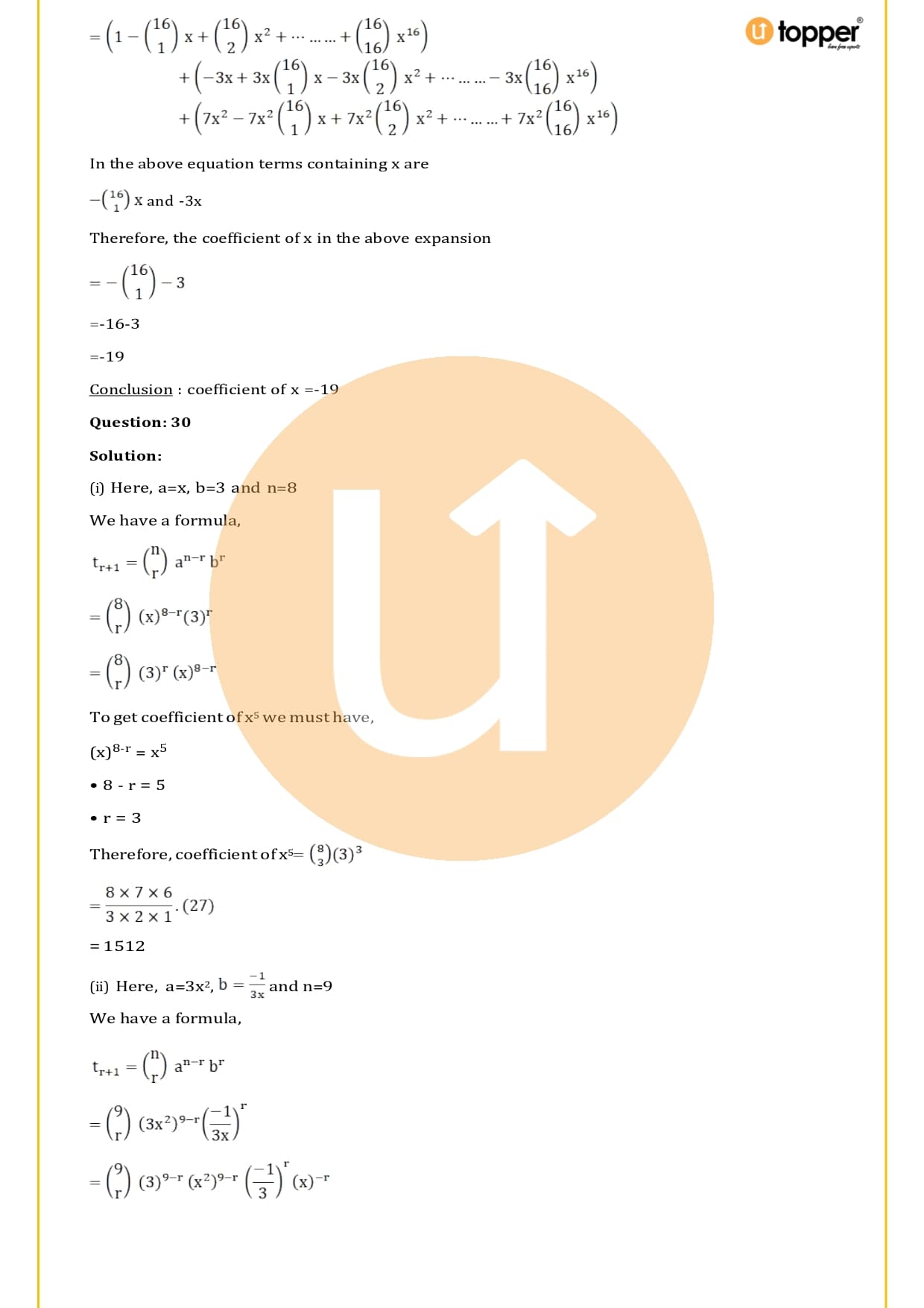
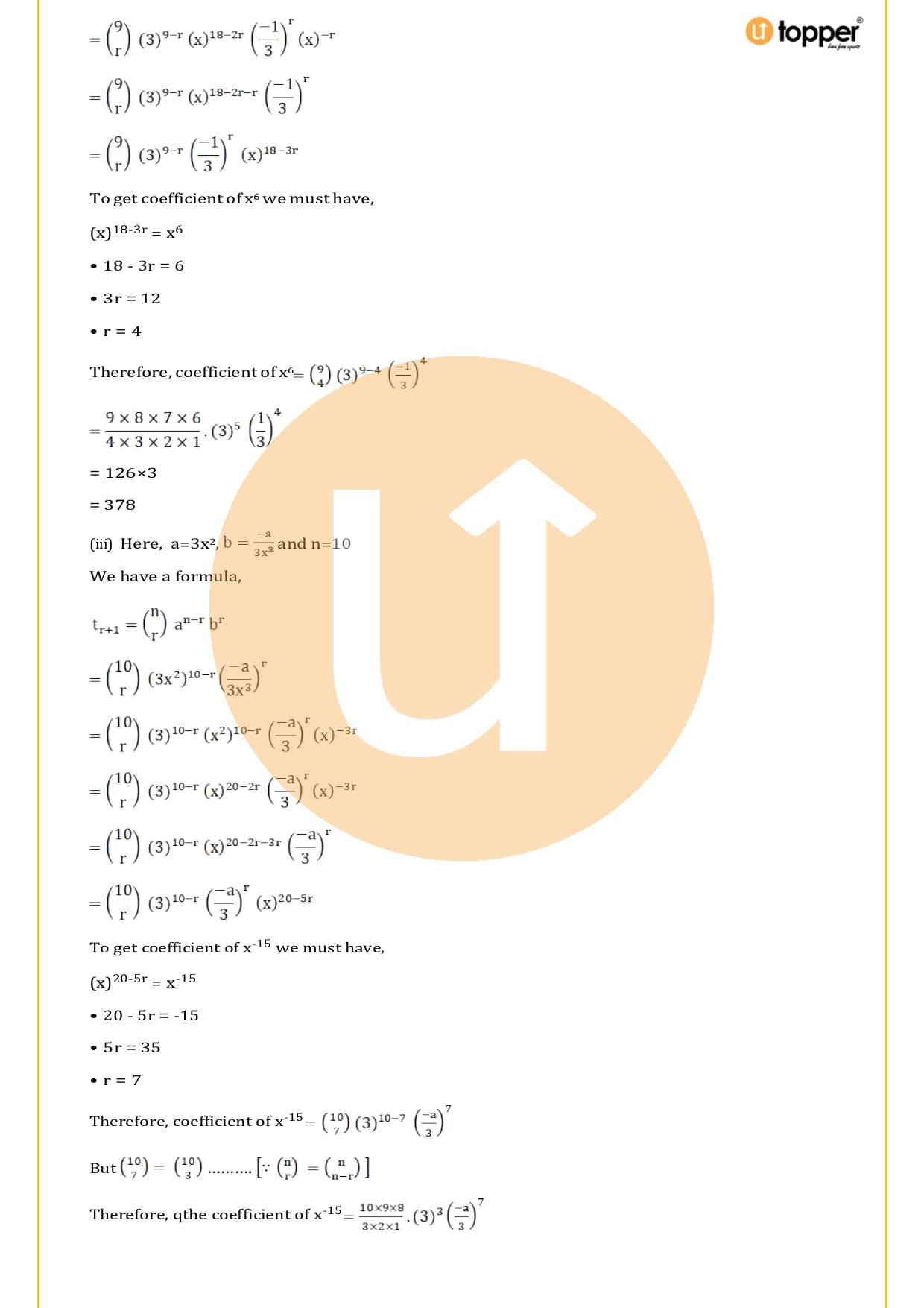














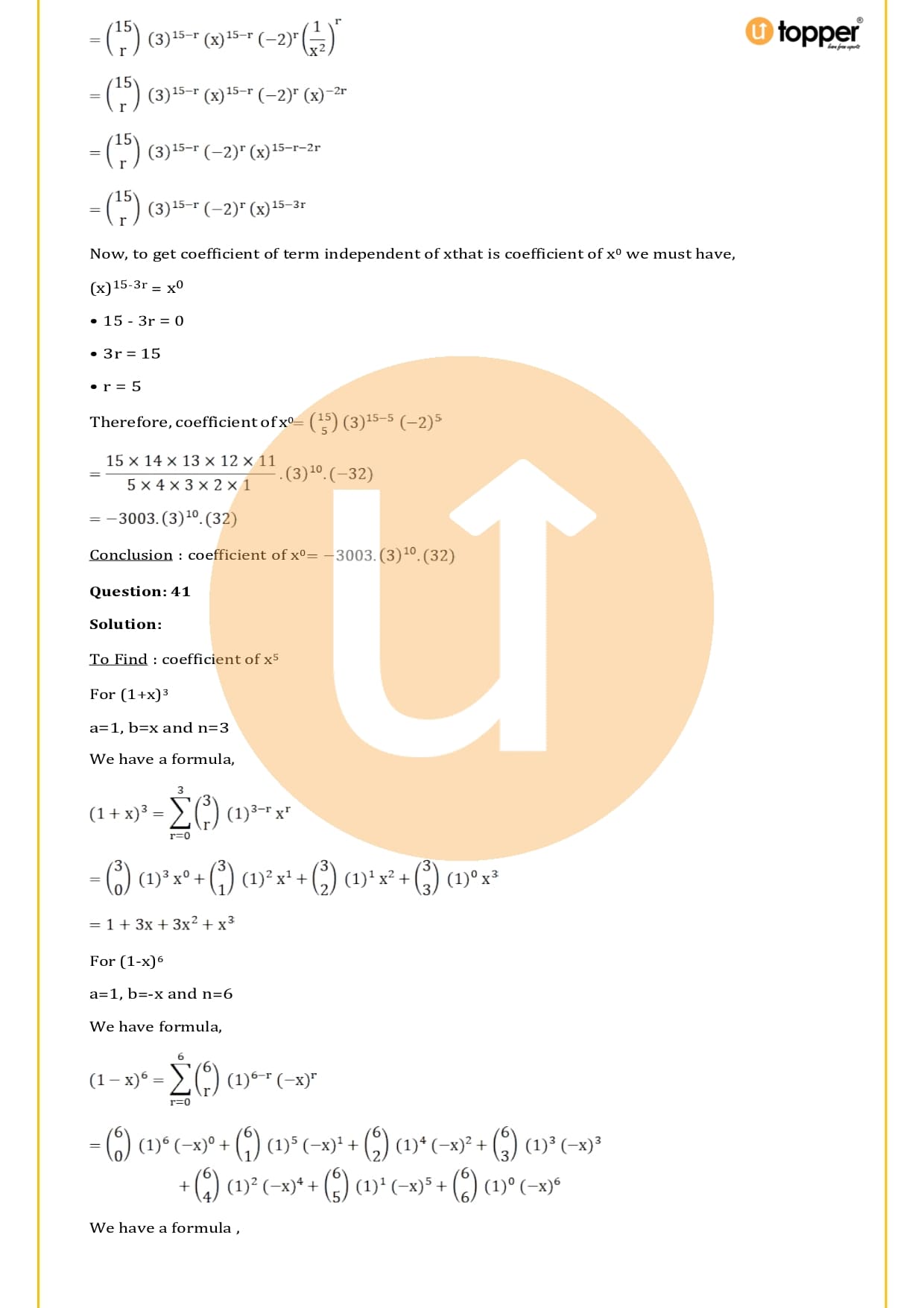





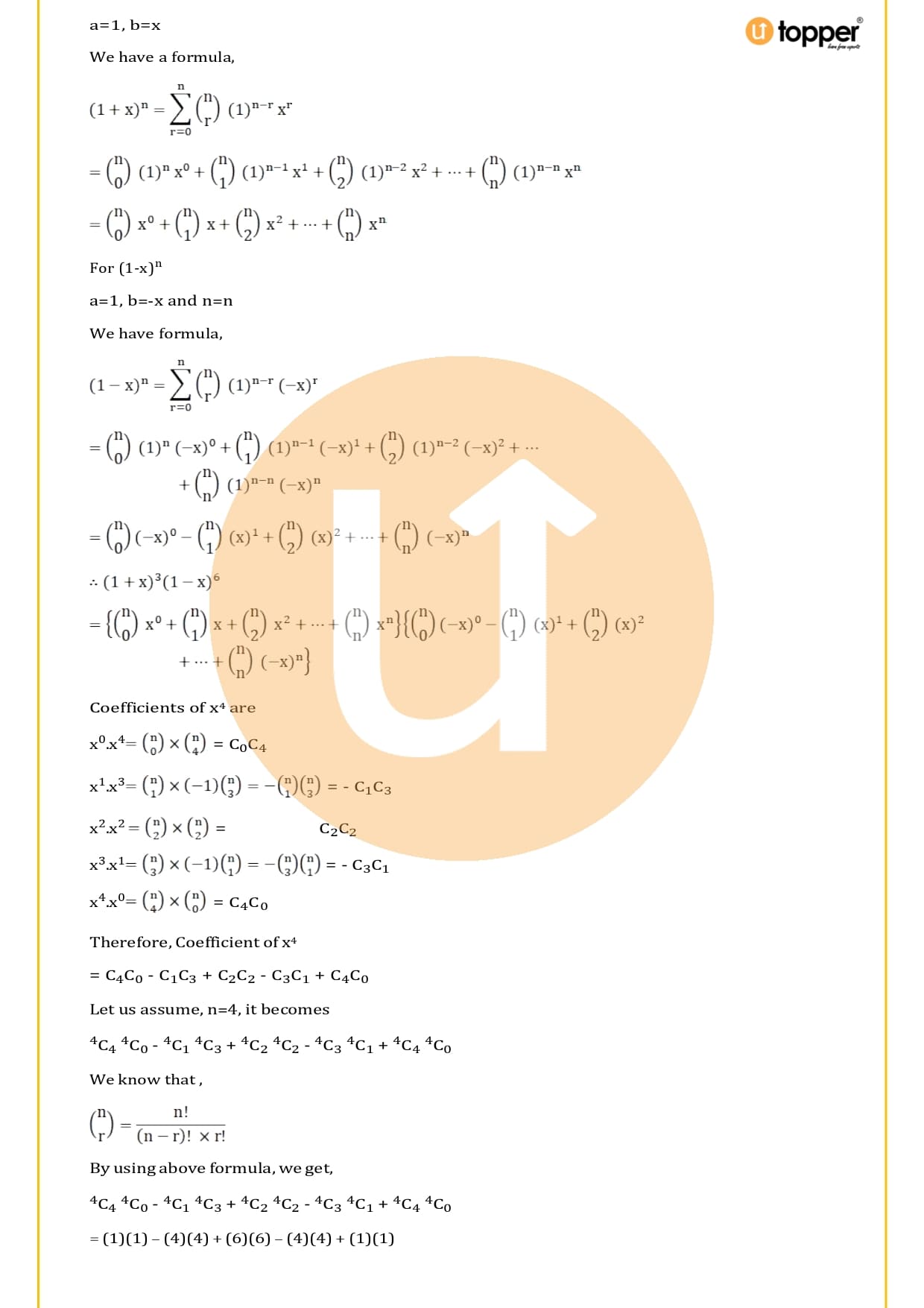

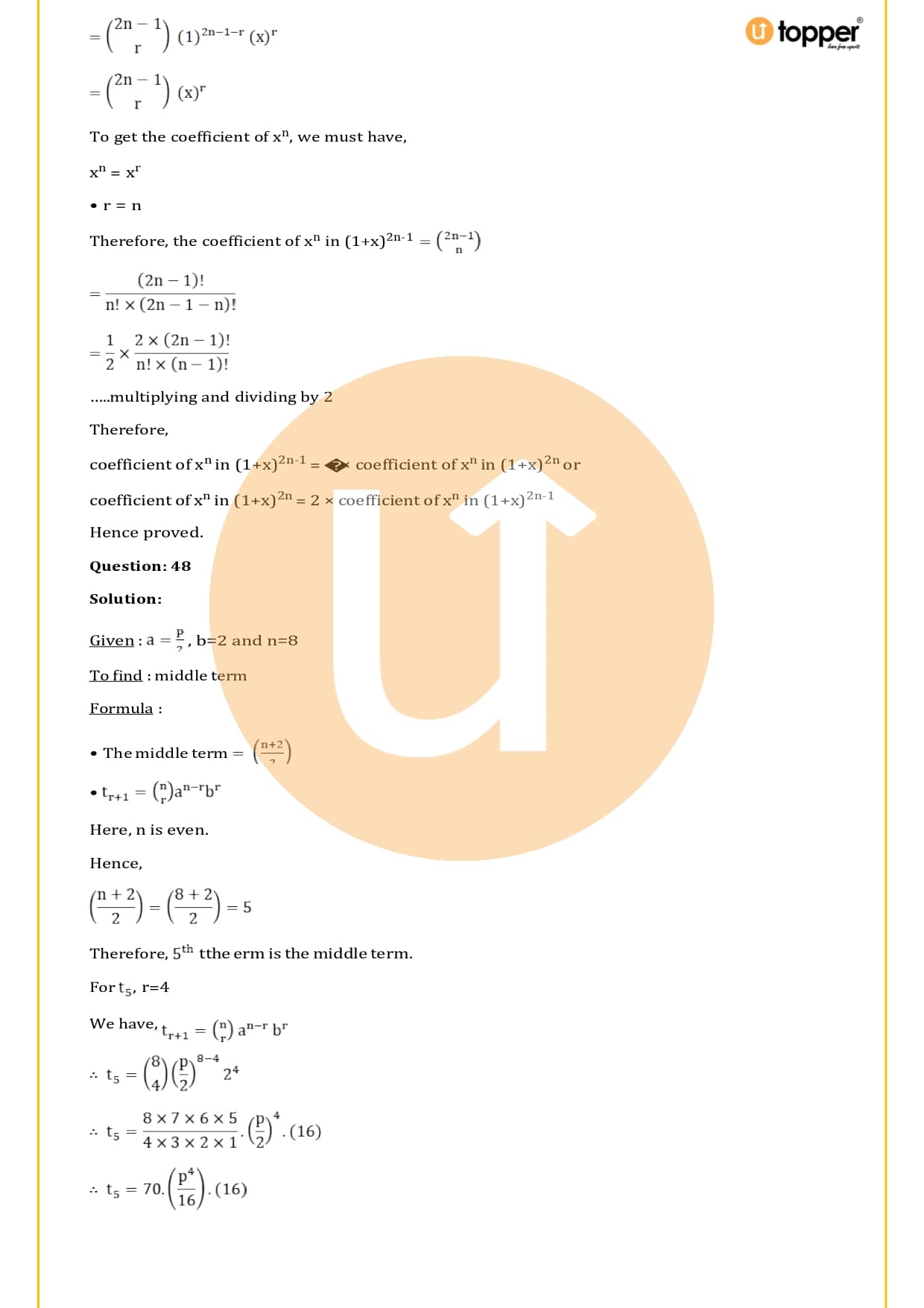




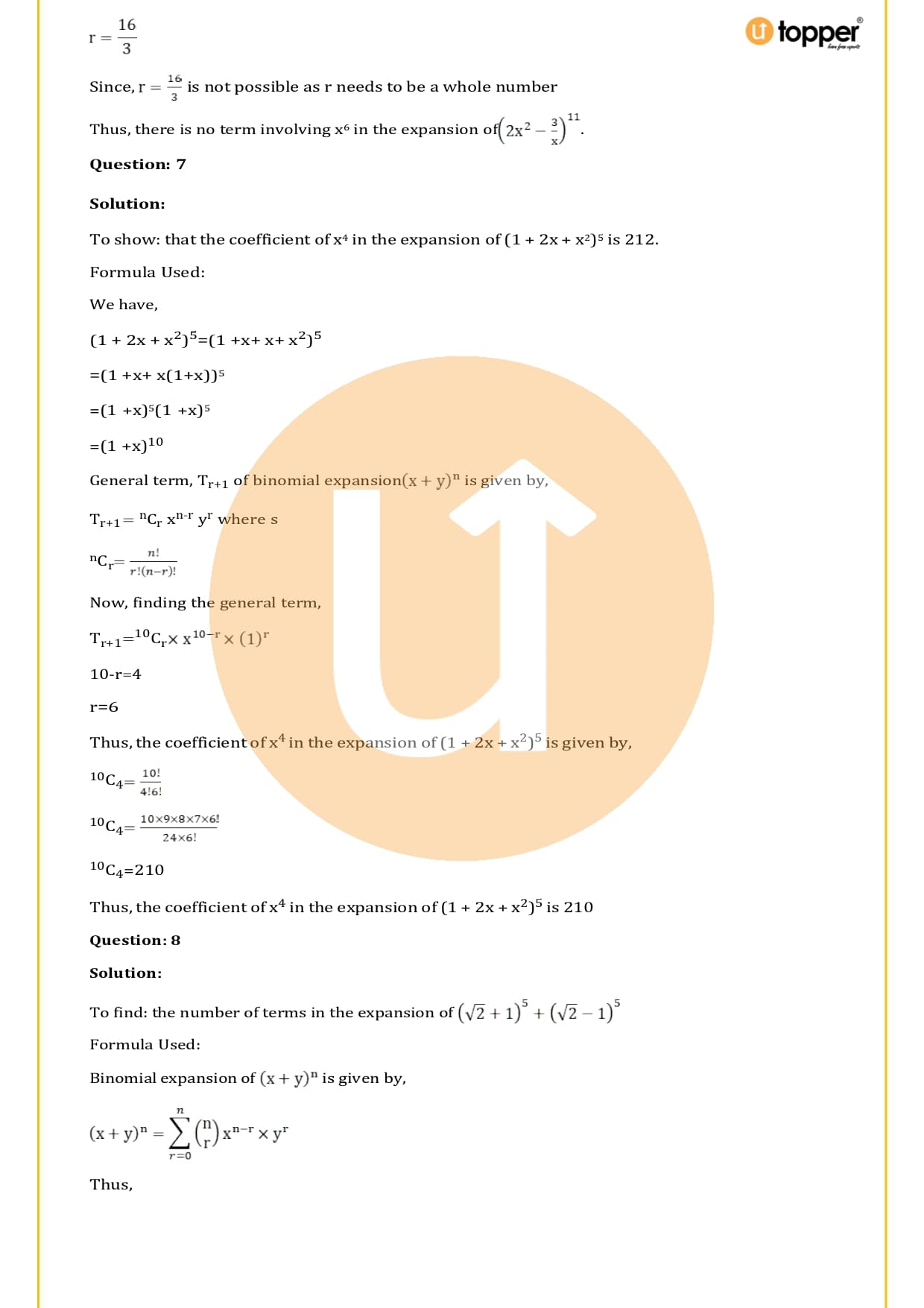





RS Aggarwal Class 11 Solutions
Chapter 1: Sets
Chapter 2: Relations
Chapter 3: Functions
Chapter 4: Principle of Mathematical Induction
Chapter 5: Complex Numbers and Quadratic Equations
Chapter 6: Linear Equations in One Variable
Chapter 7: Linear Equations in Two Variable
Chapter 8: Permutations
Chapter 9: Combinations
Chapter 10: Binomial Theorem
Chapter 11: Arithmetic Progression
Chapter 12: Geometrical Progression
Chapter 13: Some Special Series
Chapter 14: Measurement of Angles
Chapter 15: Trigonometric or Circular Functions
Chapter 16: Conditional Identities Involving the Angles of a Triangles
Chapter 17: Trigonometric Equations
Chapter 18: Solution of Triangles
Chapter 19: Graphs of Trigonometric Functions
Chapter 20: Straight Lines
Chapter 21: Circles
Chapter 22: Parabola
Chapter 23: Ellipse
Chapter 24: Hyperbola
Chapter 25: Applications of Conic Sections
Chapter 26: Three Dimensional Geometry
Chapter 27: Limits
Chapter 28: Differentiation
Chapter 29: Mathematical Reasoning
Chapter 30: Statistics
Chapter 31: Probability

Key Topics for RS Aggarwal Class 11 Solutions Chapter 10
The Binomial Theorem: An Introduction
You have learned how to find the squares and cubes of binomials like a+b and a-b in earlier classes. You used to figure out things like (98)2 = (100-2)2, (999)3 = (1000-1)3. But you won’t have an easy time finding values for high powers like (98)5.
The Binomial Theorem is a rule that makes it easier to figure out how to answer these kinds of questions. The binomial theorem makes it easy to expand (a+b)n, where n is an integer or a rational number.
RS Aggarwal Class 11 Solutions Chapter 10 covers the binomial theorem for only positive integers. The Binomial theorem is a way to expand an expression that has been raised to any finite power. This theorem is known as a very useful tool for growing numbers. This expansion is used in algebra, probability, and other fields.
Differnent Terms In The Binomial Expansion
Most questions in the binomial expansion ask you to find the middle term of the main term. Here is a list of the different terms from the chapter that are used in the binomial expansion:
- General Term
- Middle Term
- independent Term
- Determining A Particular Term
- Numerically Greatest term
- The ratio of Consecutive/coefficients
About Pascal’s Theorem
Pascal’s Triangle is what you need to use to find the coefficients of a binomial. The main point of pascal’s theorem, which is also called the “hexagrammum mysticism,” is that if you pick six random points on a conic plane (which could be an ellipse, parabola, or hyperbola in an appropriate affine plane) and then connect them with line segments in any order to make a hexagon, the three pairs of opposite sides of the hexagon will eventually meet at three points that are all on a straight line.
The Pascal line of the hexagon is the name for this straight line. It is also named for Blaise Pascal. The Euclidean Plane is a place where Pascal’s theorem works. Also, sometimes the statements need to be changed to handle special situations when the two sides are parallel.

FAQ ( Frequently Asked Questions )
1. What should the students do if they have trouble solving the questions?
Ans – If students get stuck while trying to answer the questions, they should go back to their textbooks and try again. They can also look at the solutions set for help. Students will find Utopper’s ready-made solution sets on the website or app to be very helpful. After figuring out the answers to the questions in the books, students can look at these for more help. Also, the solution sets are made by experts, so there’s no doubt about how accurate they are.
2. RS Aggarwal’s book is useful for students in Class 11?
Ans – Class 11 students can learn a lot from RS Aggarwal. In each chapter of the book, there are a lot of details about each concept, which makes it easier for students to understand and grasp each concept. It also has a lot of worked-out examples, which help students understand the ideas even better. They learn how to do the math in real life, which helps them understand how to do the math. Then there are a lot of unsolved examples that students can use to figure out if they really understand all the ideas.
3. How long should a Class 11 student practise math?
Ans – Students should keep working on problems until they think they understand all the ideas and can do all the sums correctly. For each candidate, this time could be different. There is no set time because it depends on the student. Students should make a plan for how they will study. Students should do sums every day, if possible, so they can keep doing them and be able to remember and use the information in the exam room. They should work on their math until they get it all right.
